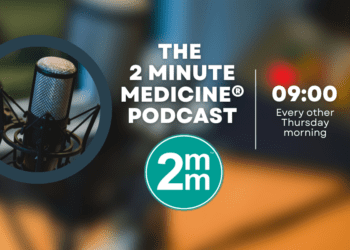AAP continues to recommend fluoride for prevention of dental caries
1. An AAP Clinical Report released today encourages pediatricians to aid in the prevention of dental caries, a common cause of tooth decay and loss in childhood.
2. The American Academic of Pediatrics (AAP) continues to recommend the use of fluoride in pediatric patients in the forms of fluoride-containing toothpaste, fluoride-supplemented tap water, and fluoride supplements as well as topical fluoride treatment in appropriate populations.
Statement Rundown: Dental caries caused by oral bacteria is the most common chronic childhood disease and is responsible for tooth decay, loss, and potentially expensive medical intervention. The best treatment for dental caries is protection and prevention, including practicing good dental hygiene and the remineralization of damaged enamel. The development of fluorosis, a cosmetic condition leading to striae and pitting of teeth, is the only common major risk of excessive fluoride exposure as lethal fluoride levels are unlikely to occur. Patients between 15 and 30 months of age are most susceptible to fluorosis. This most recent AAP clinical report highlights the most effective and risk-averse strategies for harnessing the protective benefits of fluoride. Recommendations include the use of fluoride toothpaste with the eruption of the first tooth, beginning with a smear of toothpaste and progressing to a pea-sized amount after the age of 3 years to minimize the quantity of ingested fluoride. Young children should not rinse their mouth with water, as this would increase their likelihood of swallowing excess fluoride that would otherwise be beneficial. Pediatricians should know how to assess the risk of caries beginning at 6 months of age, be able to determine whether children require additional fluoride supplementation, and should serve as advocates for fluoridation of public water sources. In addition, pediatricians should be aware of fluoride varnish indications as well as methods of application, as topical fluoride varnish treatments every 3 to 6 months in children and infants can limit caries development.
Click to read this AAP Clinical Report, published today in Pediatrics
Relevant Reading: Changes in the oral health of US children and adolescents and dental public health infrastructure since the release of the Healthy People 2010 Objectives.
More from this author: Clinical efficacy of quadrivalent HPV vaccine persists after 8 years, Few differences in location-stratified football-related concussions, Risk factors for sleep-related deaths may differ by age, Limited knowledge, high interest in pediatric advanced directives among caregivers, Virtual visits linked to decreased stress in hospitalized children
Image: PD/US Navy
©2012-2014 2minutemedicine.com. All rights reserved. No works may be reproduced without expressed written consent from 2minutemedicine.com. Disclaimer: We present factual information directly from peer reviewed medical journals. No post should be construed as medical advice and is not intended as such by the authors, editors, staff or by 2minutemedicine.com. PLEASE SEE A HEALTHCARE PROVIDER IN YOUR AREA IF YOU SEEK MEDICAL ADVICE OF ANY SORT.







